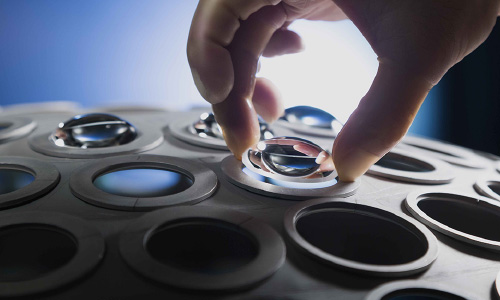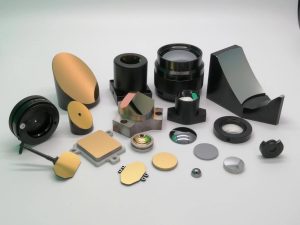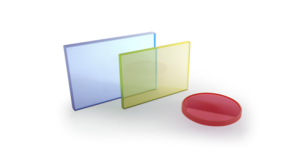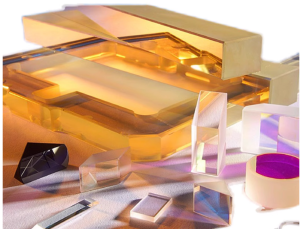Optical reflective films can generally be divided into two categories: metal reflective films and all dielectric reflective films. In addition, there is a metal dielectric reflective film that combines the two.
Reflective film product characteristics
General metals have large extinction coefficient. When the light beam is incident on the metal surface from air, the amplitude of the light entering the metal decreases rapidly, so that the light energy entering the metal decreases correspondingly and the reflected light energy increases. The greater the extinction coefficient, the faster the attenuation of light amplitude, the less light energy entering the metal, and the higher the reflectivity. People always choose those metals with large optical coefficient and stable optical properties as metal film materials. The thin metal materials commonly used in the ultraviolet region are aluminum, aluminum and silver in the visible region, and gold, silver and copper in the infrared region. In addition, chromium and platinum are often used as film materials for some special films. Because aluminum, silver, copper and other materials are easy to oxidize in the air and reduce their performance, they must be protected by dielectric film. Commonly used protective film materials include silicon oxide, magnesium fluoride, silicon dioxide, aluminum oxide, etc.

The advantages of metal reflective film are simple preparation process and wide wavelength range; The disadvantage is that the light loss is large and the reflectivity cannot be very high. In order to further improve the reflectivity of the metal reflective film, several dielectric layers with a certain thickness can be plated on the outside of the film to form the metal dielectric reflective film. It should be pointed out that the metal dielectric film increases the reflectivity of a certain wavelength (or a certain wave region), but destroys the neutral reflection characteristics of the metal film.
All dielectric reflective film is based on multi beam interference. In contrast to the antireflection film, the reflectivity of the optical surface can be increased by plating a film with a refractive index higher than the base material on the optical surface. The simplest multilayer reflection is formed by alternating evaporation of two materials with high and low refractive index. The optical thickness of each film is one fourth of a certain wavelength. Under this condition, the vibration direction of the reflected light vector on each interface participating in the superposition is the same. The synthetic amplitude increases with the increase of the number of film layers.

Reflective film product characteristics
General metals have large extinction coefficient. When the light beam is incident on the metal surface from air, the amplitude of the light entering the metal decreases rapidly, so that the light energy entering the metal decreases correspondingly and the reflected light energy increases. The greater the extinction coefficient, the faster the attenuation of light amplitude, the less light energy entering the metal, and the higher the reflectivity. People always choose those metals with large optical coefficient and stable optical properties as metal film materials. The thin metal materials commonly used in the ultraviolet region are aluminum, aluminum and silver in the visible region, and gold, silver and copper in the infrared region. In addition, chromium and platinum are often used as film materials for some special films. Because aluminum, silver, copper and other materials are easy to oxidize in the air and reduce their performance, they must be protected by dielectric film. Commonly used protective film materials include silicon oxide, magnesium fluoride, silicon dioxide, aluminum oxide, etc.
The advantages of metal reflective film are simple preparation process and wide wavelength range; The disadvantage is that the light loss is large and the reflectivity cannot be very high. In order to further improve the reflectivity of the metal reflective film, several dielectric layers with a certain thickness can be plated on the outside of the film to form the metal dielectric reflective film. It should be pointed out that the metal dielectric film increases the reflectivity of a certain wavelength (or a certain wave region), but destroys the neutral reflection characteristics of the metal film.
All dielectric reflective film is based on multi beam interference. In contrast to the antireflection film, the reflectivity of the optical surface can be increased by plating a film with a refractive index higher than the base material on the optical surface. The simplest multilayer reflection is formed by alternating evaporation of two materials with high and low refractive index. The optical thickness of each film is one fourth of a certain wavelength. Under this condition, the vibration direction of the reflected light vector on each interface participating in the superposition is the same. The synthetic amplitude increases with the increase of the number of film layers.



